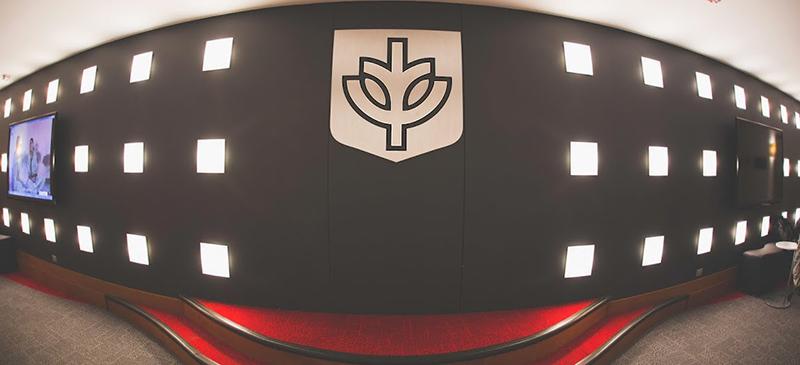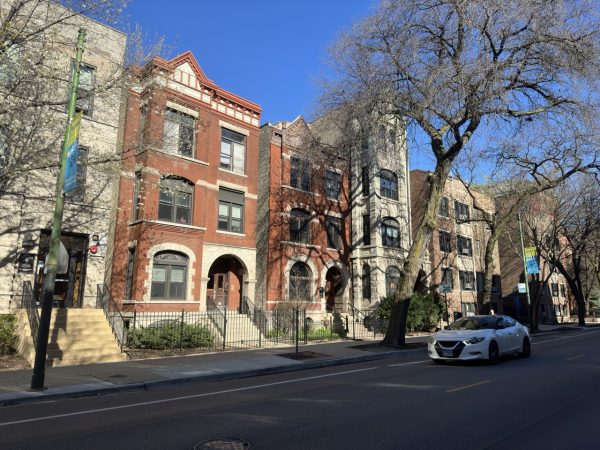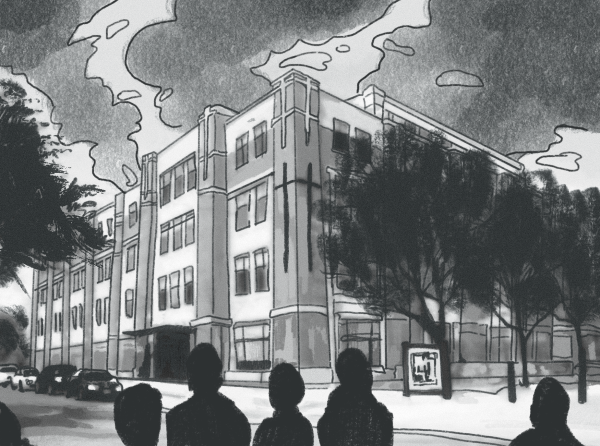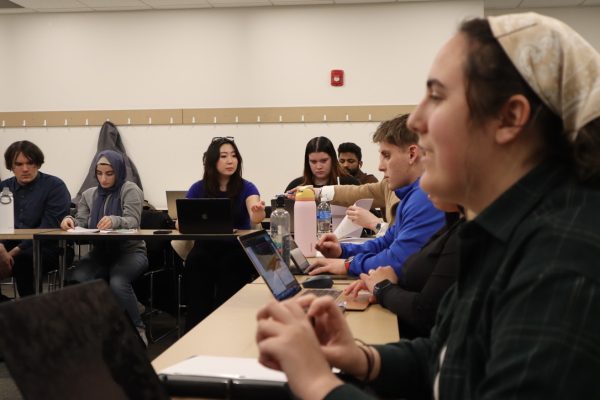DePaul tenure process seeks student involvement
At the end of Fall Quarter 2018, like clockwork, junior Halle Wagner’s email inbox lit up with a notification, one that all DePaul students get painfully used to seeing.
The email from DePaul reads: “Dear Student, It is time to complete online evaluations for your current DePaul courses.”
Unlike the past when, at the culmination of the term, Wagner would hurry through the evaluations of her instructors so that she would stop being inundated with emails reminding her to fill them out, Wagner takes her time to write out her sincere criticism and praise.
Wagner hadn’t suddenly become any more thoughtful or reflective than she had been in the past. What changed was her experience of being on a student review committee to help inform and contribute to the process of faculty going up for tenure.
Student volunteers make up a review committee to create a comprehensive evaluation of the professors up for tenure in their home college or department, which they complete during a single academic year. The review is two-fold. In one part, the students look over every Online Teacher Evaluation (OTE) filled out on behalf of the professor in question during the period of review. The other part is to send out a survey to every student the professor has worked with during the review period. That includes either in the classroom or as a supervisor in research or independent study.
Latrina West-Shields has been the business coordinator for the College of Communication for 10 years. Over the last year, she has taken up the role of coordinating the student review committee. She reaches out to specific, high-performing students that the directors of the program choose, inviting them to be part of the committee.
“I basically persuade students to give up their time to come and look through a professor’s documents,” she said.
The tenure process at DePaul has had its fair share of attention, including disputes over diversity and academic freedom. One element of that process not often discussed is the role that students play in these high-stakes determinations.
Sarah, a junior, whose name has been changed because she was told not to share this information publicly, became a part of the process in September when faculty in the Arts and Media Design Department approached her via email.
“I thought it would look bad on my part to say no, even though I was so busy,” Sarah said. “I also knew who recommended me and knew the director, so I felt like I couldn’t let them down.”
Alexa Murphy is the acting dean of the College of Communication, though she was previously an associate dean who oversaw the personnel process. According to her, the dual factions are meant to account for changes in interpretation that can occur. She said students may change their perspective over time.
The student committee takes the information garnered from the responses from both sets of evaluations and distills it into the report. It identifies trends noticed, as well as patterned areas of strength and weakness.
Lucy Rinehart is the associate provost for academic planning and faculty. She oversees the tenure and promotion process at the university level. She says that though the faculty handbook outlines a universitywide guideline for student input, colleges and departments have the freedom to morph the particulars to fit the needs of their circumstances. The specific policy was codified in 2016.
West-Shields says in the two cycles she’s been coordinator, the reports were no more than three pages and the students came in on a couple of Fridays to get them done. She was also told to recruit four students to review two teachers.
Sarah says all the information she was privy to was held in a secure room. She was only given access to the information when she was there, and the reports she wrote for two professors took eight visits. She was the only person on her committee.
The report was recommended to her to be a few pages, but she found that unrealistic. Her reports ended up being about 10 pages each.
“I had no clue how I was going to condense years and years of survey responses and data into three or four pages,” she said.
During Fall Quarter, when West-Shields first ran the committee, it was easy to galvanize a group of students to join. But during the most recent round, this proved harder.
“I struggled the second time to convince the students. When they are hesitant, we always offer them lunch or breakfast. Free food always seems to win. I also tweaked my schedule to fit theirs,” West-Shields said.
The department head aided Sarah and guided her through the whole process, though she says she never received the food mentioned.
Once finished, the committee sends its report to the faculty council and is sometimes invited to join a department meeting to discuss their findings.
Rinehart says the report is a key piece of evidence and consideration.
“The student report doesn’t make a recommendation — it compiles evidence and is a channel for the voices of students.” She notes that though they’re impartial, the students sometimes have to reconcile discrepancies in their peers’ opinions.
However, Sarah said she was asked to draw conclusions about the professors and agree or disagree that they should be awarded tenure.
“It was easy because no one said a single negative thing about any of the teachers I reviewed,” she said. “It was just painstaking because I had to accumulate all the info and then sum it up in a ‘short’ review.”
Finally, the report is added to their dossier under the “teaching” component of the evaluation, alongside “scholarship” and “service.” The dossier follows the review of the professor, from that local level to the university level, until a decision on promotion is made. Rinehart says the report is cited at every level of the review and it is a key piece of data for the “teaching” portion.
Twenty-three faculty members were tenured in 2018, the same number as in 2017.
Maria DeMoya, professor of public relations, received tenure this past fall.
“Regardless of the cost or risk, I would not feel comfortable with the people who are most impacted by our work being left out of the conversation,” DeMoya said.
Murphy agrees that being part of the student committee can have many benefits.
“It’s something that you can brag about later. You could put in a resume to talk about these skills that you developed by being chosen to be among — not that many — students,” Murphy said.
DeMoya sees students as vital to a healthy academic ecosystem.
“I hope students, in general, would feel empowered by knowing that their experience is valued to the point that it can make or break somebody’s career,” she said.
Ultimately, Sarah sees the role she played in the same light, especially in regards to the recent situation with tenured professor Jason Hill,
“It is important that the process be transparent, especially in the time where we see the power of tenure,” Sarah said. “It’s important that students understand what role we play in deciding whether or not a teacher sees tenure. If I were to read any reviews of the professors that claimed them to be problematic, I would strongly state that in my report.”















Bibiana Suárez • Jun 6, 2019 at 2:04 pm
In this article, Hunegs quoted a student by the name “Sarah” (not her real name), who said she was an AMD major, complaining about having been asked to review two faculty at the same time. The student also talked about “not having a clue” as to how she was to conduct the review and write a report.
First, the AMD Personnel Committee has never asked the same student to participate in two faculty reviews in the same year. The faculty chairing the review works very closely with our student rep(s), advising on how to go about it, as well as giving the student feedback on report drafts. We are always cautious not to influence the student. In addition, we have never promised any of our student reps a meal or any other type of compensation. The latter could be seen as an effort to “buy out” or influence the student, which we would never do.
It is true that the work of a student rep for a promotion and tenure review is extensive and time consuming, however, it is mandated by the university’s Faculty Handbook and therefore unavoidable.
We wish Hunegs would have checked the facts before including “Sarah’s” story in her article.
Bibiana Suárez
Vincent de Paul Professor of Art, Media, and Design
Chair, AMD Personnel Committee